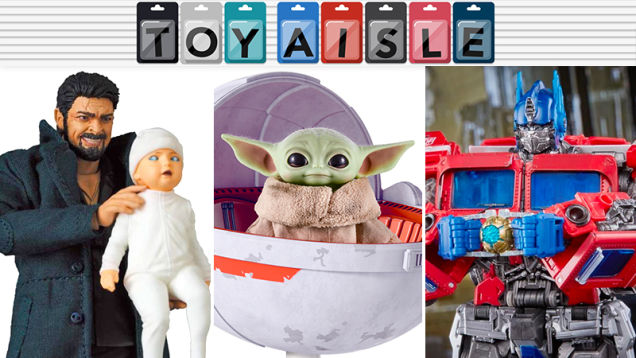After being in development for more than a year and a half, the Mageia 8 operating system is now officially released as a major update to this distro forked from Mandriva Linux.
Source: LXer – Mageia 8 Released with Linux 5.10 LTS, Better Support for NVIDIA Optimus Laptops
Monthly Archives: February 2021
Google's Stadia Problem? A Video Game Unit That's Not Googley Enough
The tech giant likes to test and tweak. Stadia promised to change the industry and failed to deliver. From a report: Google’s streaming video game service Stadia had ambitious plans to disrupt the gaming industry, which is dominated by consoles. The tech giant had planned to pack Stadia with original content, announcing two years ago that it was hiring hundreds of game developers and starting studios in Los Angeles and Montreal. But those teams barely had time to get started before they were dismissed earlier this month as Google shut down in-house game development. From the beginning, Google’s approach to video games wasn’t very Google-like. The Alphabet company tends to launch bare-bones products and test them as they grow. With Stadia, it came out big. Flashy press conferences and ad campaigns promised high-quality games with innovative features playable on Android smartphones or on the TV through Chromecast. Gamers would have access to a library of exclusive titles and well-known favorites like Assassin’s Creed without having to dish out $500 for Sony Corp’s PlayStation or Microsoft’s Xbox.
So when Stadia launched in 2019, gamers were expecting the complete package, not the beta model. While the cloud streaming technology was there, playing to Google’s strengths, the library of games was underwhelming and many of the promised features nonexistent. Other platforms offer hundreds of games a year, but Stadia offers fewer than 80, according to Mat Piscatella, an analyst at the NPD Group, which tracks video game sales data. Players also didn’t like Stadia’s business model, which required customers to buy games individually rather than subscribe to an all-you-can-play service a la Netflix or the Xbox’s Game Pass. Paying as much as $60 for a single game, for it only to exist on Google’s servers rather than on your own PC, seemed a stretch to some. After all the hype, gamers were disappointed. Stadia missed its targets for sales of controllers and monthly active users by hundreds of thousands, according to two people familiar with the matter, who asked not to be identified discussing private information. A Google spokesperson declined to comment for this story. “I think it would be fair to say the messaging leading up to and around the launch was inconsistent,” with the final product, Piscatella says. Further reading: Stadia Leadership Praised Development Studios For ‘Great Progress’ Just One Week Before Laying Them All Off.
Read more of this story at Slashdot.
Source: Slashdot – Google’s Stadia Problem? A Video Game Unit That’s Not Googley Enough
Google's New Lyra Voice Codec + AV1 Aim For Video Chats Over 56kbps Modems In 2021
Google’s AI team has announced “Lyra” as a very low bit-rate codec for speech compression designed for use-cses like WebRTC and other video chats… With a bit rate so low that when combined with the likes of the AV1 video codec could potentially allow video chats over 56kbps Internet connections…
Source: Phoronix – Google’s New Lyra Voice Codec + AV1 Aim For Video Chats Over 56kbps Modems In 2021
How to Check Memory Utilization in Linux
A developer or seasoned sysadmin can check usage from both the command line and GUI.
Source: Linux Today – How to Check Memory Utilization in Linux
How I became a Kubernetes maintainer in 4 hours a week
“I want to contribute to Kubernetes, but I don[he]#039[/he]t know where to start.” I have heard (and even said) versions of this sentiment many times since Kubernetes started gaining influence. So, over the last year, I[he]#039[/he]ve spent time contributing to the project, and I[he]#039[/he]ve found it worth every minute. I[he]#039[/he]ve discovered that Kubernetes is a project with the right scale for anyone to make an impact in whatever time they have available in their schedule. For me, that was just four hours a week. No more, no less.
Source: LXer – How I became a Kubernetes maintainer in 4 hours a week
Facebook's BARS is an experimental TikTok-like app for rappers
Facebook’s R&D division, the NPE Team, has introduced another experimental app that’s centered around music. It’s called BARS, and it’s meant to give aspiring rappers a way to record their rhymes with the app’s studio quality…
Source: Engadget – Facebook’s BARS is an experimental TikTok-like app for rappers
US Drops Digital Tax Demand, Opening Door To Global Deal
The U.S. has dropped a key demand in negotiations over digital taxation of technology companies such as Alphabet’s Google and Facebook, lifting a barrier that had raised transatlantic trade tensions and prevented an international deal. From a report: Treasury Secretary Janet Yellen told her counterparts at a virtual meeting of Group of 20 finance officials that the U.S. is no longer calling for a so-called safe harbor rule that would allow U.S. companies to opt out of paying such a tax overseas, according to a Treasury spokeswoman. Yellen said the U.S. will now engage robustly in negotiations on both that issue and on a global minimum tax, the spokeswoman said.
The talks between around 140 countries on how to overhaul tax rules stumbled last year when Donald Trump’s administration demanded there should be a safe harbor regime. Most other countries said they couldn’t accept such optionality on paying tax. “Today we saw a strong tailwind for a fair taxation of the large digital corporations,” German Finance Minister Olaf Scholz said. “My U.S. colleague Janet Yellen declared today at the G20 finance ministers that the U.S. will join in.” There is still some distance to go to get a global deal on digital tax. Beyond the issue of safe harbor, the U.S. and Europe have long been at odds over the scope of any new rules. There are also outstanding issues over the amount of profit to be reallocated to different jurisdictions and how to ensure and enforce tax certainty.
Read more of this story at Slashdot.
Source: Slashdot – US Drops Digital Tax Demand, Opening Door To Global Deal
Best Free Android Apps: OpenWeather – weather forecast tool
OpenWeather is an app that offers a simple way to access the latest weather forecast from your Android device. The software aggregates meteorological data from tens of thousands of weather stations, on-ground radars and satellites.
Source: LXer – Best Free Android Apps: OpenWeather – weather forecast tool
Apple Forced To Add iPhone and MacBook Repairability Scores To Comply With French Law
Apple has added iPhone and MacBook repairability scores to its online store in France to comply with a new French law that came into effect this year. From a report: MacGeneration reports that the rating takes into account features like how easily a device can be disassembled and the availability of repair manuals and spare parts. Links to each product’s final score, with details for how they were calculated, are available on this support page. The ratings for Apple’s products vary between products and generations. Its iPhone 12 lineup all have scores of six out of 10 for example, while the previous year’s iPhone 11s are rated lower at between 4.5 and 4.6. The improvement, according to the detailed scoring assessment, is due to the newer iPhones being easier to dismantle than the previous year’s models, and spare parts being cheaper compared to the cost of the phone itself. There’s less of a spread between the company’s different MacBook models, whose scores range from 5.6 to 7.
Read more of this story at Slashdot.
Source: Slashdot – Apple Forced To Add iPhone and MacBook Repairability Scores To Comply With French Law
How To Install ERPNext on CentOS 8
ERPNext is a completely robust ERP framework intended for small and medium-sized businesses. It covers an extensive variety of features, including accounting, CRM, inventory, selling, purchasing, manufacturing, projects, HR and payroll, website, e-commerce, and more – all of which make it profoundly adaptable and extendable.
Source: LXer – How To Install ERPNext on CentOS 8
A PlayStation Network outage is affecting certain games
Just a day after a massive Xbox Live outage, Sony’s PlayStation Network has been experiencing issues for several hours. The problem on this end is a bit different, and based on reports may only affect certain games. Sony’s PSN Status page rep…
Source: Engadget – A PlayStation Network outage is affecting certain games
Federal Authorities Confirm Sighting of Yet Another UFO, This Time in New Mexico

Multiple authorities have confirmed that commercial airline pilots recently saw, well, something, hurtling through America’s southwestern skies.
Source: Gizmodo – Federal Authorities Confirm Sighting of Yet Another UFO, This Time in New Mexico
Navigate your FreeDOS system
FreeDOS is an open source implementation of DOS. It[he]#039[/he]s not a remix of Linux, and it is compatible with the operating system that introduced many people to personal computing. This makes it an important resource for running legacy applications, playing retro games, updating firmware on motherboards, and experiencing a little bit of living computer history. In this article, I[he]#039[/he]ll look at some of the essential commands used to navigate a FreeDOS system.
Source: LXer – Navigate your FreeDOS system
NASA’s Perseverance rover carried a family portrait of its robotic siblings to Mars
Like any good piece of high-tech hardware, NASA’s Perseverance rover features an Easter egg hidden in plain sight. Since landing on Mars on February 18th, NASA has been sharing thousands of photos captured by the rover. And if you look close enough,…
Source: Engadget – NASA’s Perseverance rover carried a family portrait of its robotic siblings to Mars
I'm Packing My Bags to Visit the Real-Life Inspiration for Windows XP's Wallpaper

I don’t think about the iconic Windows XP wallpaper often, but when an article or a video comes across my social media feed reminding me of it, nothing but happy memories come flooding back. Thanks to a recent SFGate article, I feel like I’m lying in a soft patch of grass, a cool breeze washing over my skin. I can see…
Source: Gizmodo – I’m Packing My Bags to Visit the Real-Life Inspiration for Windows XP’s Wallpaper
A Deep Dive into the Wayland Protocol for Linux
What’s the future look like for the new(er) Linux windowing system?
Source: Linux Today – A Deep Dive into the Wayland Protocol for Linux
Oh No, There Are Too Many Babies in This Week's Toy News

Welcome back to Toy Aisle, io9’s regular round up of all things good and plastic. This week: Babies! So many babies! Baby Yoda is here, laser babies are here, and, well, what more could you want? Check it out!
Source: io9 – Oh No, There Are Too Many Babies in This Week’s Toy News
Apple Mail and Hidden Tracking Images
John Gruber, writing at DaringFireball: In my piece yesterday about email tracking images (“spy pixels” or “spy trackers”), I complained about the fact that Apple — a company that rightfully prides itself for its numerous features protecting user privacy — offers no built-in defenses for email tracking. A slew of readers wrote to argue that Apple Mail does offer such a feature: the option not to load any remote resources at all. It’s a setting for Mail on both Mac and iOS, and I know about it — I’ve had it enabled for years. But this is a throwing-the-baby-out-with-bath-water approach. What Hey offers — by default — is the ability to load regular images automatically, so your messages look “right”, but block all known images from tracking sources (which are generally 1 x 1 px invisible GIFs).
Typical users are never going to enable Mail’s option not to load remote content. It renders nearly all marketing messages and newsletters as weird-looking at best, unreadable at worst. And when you get a message whose images you do want to see, when you tell Mail to load them, it loads all of them — including trackers. Apple Mail has no knowledge of spy trackers at all, just an all-or-nothing ability to turn off all remote images and load them manually. Mail’s “Load remote content in messages” option is a great solution to bandwidth problems — remember to turn it on the next time you’re using Wi-Fi on an airplane, for example. It’s a terrible solution to tracking. No one would call it a good solution to tracking if Safari’s only defense were an option not to load any images at all until you manually click a button in each tab to load them all. But that’s exactly what Apple offers with Mail. “Don’t get me started on how predictable this entire privacy disaster was, once we lost the war over whether email messages should be plain text only or could contain embedded HTML. Effectively all email clients are web browsers now, yet don’t have any of the privacy protection features actual browsers do,” he adds.
Read more of this story at Slashdot.
Source: Slashdot – Apple Mail and Hidden Tracking Images
Mageia 8 Released – Flips On AMDGPU For Older GCN GPUs, Better ARM Support
Mageia 8 is out today as a significant and long overdue update to this Linux distribution long ago derived from Mandriva/Mandrake lineage…
Source: Phoronix – Mageia 8 Released – Flips On AMDGPU For Older GCN GPUs, Better ARM Support
PulseAudio vs JACK: Adventures In Linux Audio
Which is the best Linux audio option for users?
Source: Linux Today – PulseAudio vs JACK: Adventures In Linux Audio
